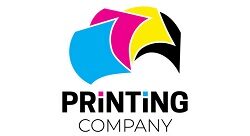Essential Printing Terminology Every Designer Should Know
Introduction
In the world of design, understanding printing terminology is crucial for effective communication with print vendors and ensuring the successful execution of your design projects. Whether you’re a graphic designer, a web designer, or even just someone who occasionally needs to work with print materials, familiarizing yourself with key printing terms can save you time, money, and frustration. In this blog post, we will cover some essential printing terminology that every designer should know.
1. Bleed
In the world of printing, ‘bleed’ refers to the area of a design that extends beyond the edge of the final trimmed document. It ensures that there are no white edges or borders around the printed materials, as the ink is expected to extend to the very edge. When designing, it is crucial to include bleed to prevent any unwanted white spaces.
2. CMYK
CMYK stands for Cyan, Magenta, Yellow, and Key (black). It is the color model used in most printing processes. Designers must convert their designs to CMYK before sending them to print to ensure accurate color reproduction.
3. DPI
DPI, or Dots Per Inch, is a measurement of printing resolution. It determines the number of dots (or pixels) per inch that a printer can produce. Higher DPI results in finer details and sharper prints. Designers should consider the recommended DPI for the desired print quality.
4. Spot Color
A spot color is a single, pre-mixed ink used in printing. It is often used for specific branding colors or when precise color matching is required. Spot colors are commonly used in projects such as corporate logos and stationery.
5. Vector Graphics
Vector graphics are digital images created using mathematical equations. Unlike raster images (pixel-based), vector graphics can be resized without losing quality. Designers often use vector graphics for logos, illustrations, and other elements in print designs.
6. Registration Marks
Registration marks are small crosses or targets placed on a design to ensure accurate alignment of different colors or layers during the printing process. They help printers align each color precisely, reducing misregistration issues.
7. Pantone
Pantone is a company that created a standardized color matching system widely used in the printing industry. The Pantone Matching System (PMS) provides a range of color swatches, allowing designers to select specific colors for accurate reproduction.
8. Lamination
Lamination is a process of applying a thin plastic film onto printed materials to protect them from wear and tear. It can enhance the appearance, durability, and longevity of printed products such as business cards, brochures, and menus.
9. Die-cutting
Die-cutting is a process that uses a specialized tool, called a die, to cut specific shapes or designs into printed materials. It allows for intricate and unique shapes not achievable with regular cutting methods. Die-cutting is often used for packaging, business cards, and invitations.
10. Proof
A proof is a test print produced before the final production run. It allows designers and clients to review and approve the design, ensuring that everything appears as intended. Proofing is essential to catch any errors or make necessary adjustments before mass printing.
Summary
Knowing the right printing terminology can empower designers to navigate the printing process smoothly and achieve the desired results. This blog post aims to provide a comprehensive overview of essential printing terms, including explanations of common concepts such as bleed, CMYK, DPI, and more. By understanding these terms, designers can effectively communicate their design requirements to print vendors, troubleshoot issues, and ensure the quality of their printed materials. Whether you’re new to the world of design or a seasoned profe article ssional, having a solid grasp of printing terminology is a valuable asset that will enhance your ability to produce outstanding printed materials.
-
- Q: What is bleed?
A: Bleed refers to the area outside the trim line that is intentionally left blank. It ensures that artwork or background colors extend beyond the trim edge, allowing for slight variations in trimming.
-
- Q: What is CMYK?
A: CMYK stands for Cyan, Magenta, Yellow, and Key (black). It is a color mode used in printing where different combinations of these four colors are applied to create a wide range of colors.
-
- Q: What is DPI?
A: DPI (Dots Per Inch) refers to the resolution of an image or printed output. It indicates the number of dots that can be placed within a one-inch span, determining the image’s sharpness and detail.
-
- Q: What is a proof?
A: A proof is a printed sample of a design that allows designers to review and approve it before the final print run. It ensures accuracy, color correctness, and overall quality.
-
- Q: What is a vector file?
A: A vector file is a type of graphic that uses mathematical formulas to define shapes, lines, and colors. It can be scaled infinitely without losing quality, making it ideal for printing purposes.
-
- Q: What is a raster image?
A: A raster image is made up of a grid of individual pixels, each having a specific color value. It is resolution-dependent and can lose quality when resized or printed at a larger size than its original resolution.
-
- Q: What is spot color?
A: Spot color refers to the use of premixed inks, typically Pantone colors, to achieve precise and consistent colors throughout the printing process. It is commonly used for logos, branding, and specific color matching.
-
- Q: What is trapping?
A: Trapping is the technique used to prevent gaps or misalignment between different colors or objects during the printing process. It involves slightly overlapping adjacent colors or objects to account for potential registration errors.
-
- Q: What is a die-cut?
A: A die-cut refers to a process that uses a custom-made steel cutting die to create unique shapes or cutouts in printed materials. It adds visual interest and enhances the design’s overall appeal.
-
- Q: What is a halftone?
A: Halftone is a technique that simulates continuous-tone images, such as photographs, by using a series of small dots of varying sizes. It creates the illusion of different shades and gradients when printed.

Welcome to my website! My name is Logan Truscott, and I am a professional Vehicle Wrap Designer with a passion for all things related to printing and design. With years of experience in the industry, I have honed my skills and expertise to provide top-notch services to my clients.

